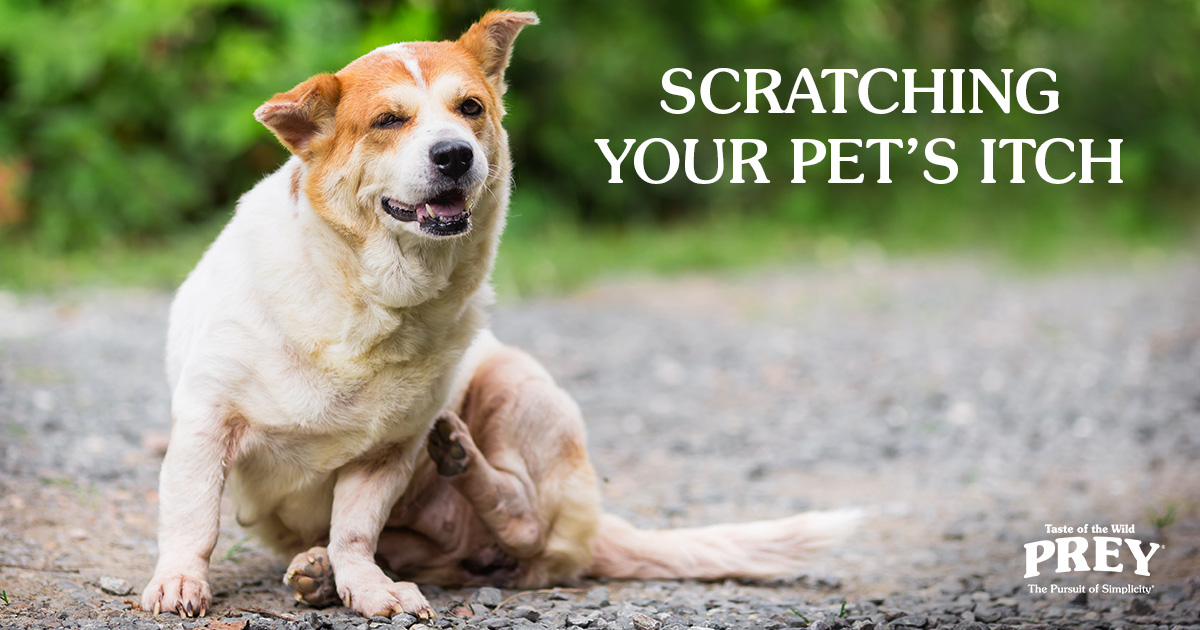Hypoallergenic Dog Food: How Does It Work?
Category: Nutrition

If you’re starting to research food allergies and hypoallergenic dog food, there are a few misconceptions that are important for you to be aware of. We’ll go through those and other information about food allergies in dogs — but if your dog is showing any signs of illness, your veterinarian should be your first call.
Hypoallergenic Food for Dogs
The first thing to know about hypoallergenic diets for dogs is that, while it’s a relatively common term used by pet parents, no diet can truly be allergen-free. Instead, specialty dog food is formulated with ingredients that reduce the risk of an allergic reaction. These are known as hydrolyzed-protein diets and limited-ingredient diets. More on that later — let’s go over dog food allergies and food intolerances.
The Facts About Dog Food Allergies
A food allergy is an abnormal reaction to a normal food. This occurs when the dog’s immune system misidentifies a substance in the food, most commonly a protein, as a foreign invader and mounts an unnecessary immune response against it. This often leads to itchy skin and, for a small percentage of dogs, gastrointestinal signs like vomiting or diarrhea. A food allergy can occur suddenly after a dog has been eating the same ingredients for months or years with no problems.
Protein is the most common food allergen, with beef, dairy products, chicken and wheat topping the list. Other allergy-triggering protein ingredients include lamb, eggs and soy, but over time, dogs can develop allergies to any protein source they’re repeatedly exposed to. Dogs can also be allergic to preservatives, food additives or other ingredients in their diet.
True Food Allergies in Dogs Are Rare
Food allergies are actually very uncommon in dogs. Flea and environmental allergies are far more likely, which is when dogs react to flea saliva or pollen, mold, dust mites and other environmental irritants. Dogs with food allergies tend to itch all year long, while those with environmental allergies often experience seasonal signs.
To complicate matters, dogs can be allergic to more than one allergen and have both food and environmental allergies. Some dog breeds, such as Labrador retrievers, golden retrievers and cocker spaniels, can be genetically predisposed to allergies.
Signs of Food Allergies in Dogs
Some dogs may experience gastrointestinal issues including vomiting, diarrhea, gas, loud intestinal rumbling and frequent bowel movements. They may also experience weight loss and irritability. However, the most common signs of a food allergy include:
- Nonseasonal itching
- Scratching or chewing their face, ears, feet or groin
- Red, irritated skin
- Secondary skin infections
- Chronic or recurring ear infections
Food Intolerance Is More Common in Dogs
While we’ve spent some time discussing a food allergy, it is far more likely that a dog has a food intolerance rather than a food allergy. A food intolerance doesn’t involve the immune system reacting to an ingredient in the diet (an allergic reaction). Instead, it usually occurs when a dog has trouble digesting a particular ingredient.
Diagnosing a Food Allergy or Food Intolerance in Dogs
The best way to help your dog is to start with a visit to your veterinarian. They can provide your dog with medications to help relieve the itch and other symptoms while you work together to determine what’s causing it. They will most likely start by ruling out parasites, infections, metabolic diseases and other possible causes of your dog’s symptoms.
To check for a food allergy or intolerance, your veterinarian may recommend an elimination diet trial for 8 to 12 weeks. The goal is to remove potential allergens from the diet to see if your dog’s symptoms resolve. While there’s no such thing as a hypoallergenic diet, your veterinarian may recommend a limited-ingredient diet or a hydrolyzed-protein diet.
A limited-ingredient diet typically includes a single carbohydrate source and a single protein source (e.g., pasture-raised Angus beef, cage-free turkey or trout raised in spring-fed water). Sometimes a single-protein diet also contains a novel protein that the dog hasn’t been exposed to before, like venison, duck or salmon. These diets provide all the essential nutrients dogs need and are formulated to provide complete and balanced nutrition, even with only a few ingredients. A limited-ingredient formula may also help dogs that have a sensitive digestive system or skin issues, even if they don’t have a food allergy. Hydrolyzed diets have the proteins broken down into pieces small enough to avoid detection by the immune system and are typically only available by prescription. Your veterinarian will choose the best dog food for your dog.
During the elimination trial, it’s very important that your dog doesn’t eat anything else besides the assigned diet. That means no treats, rawhides, table scraps, flavored medications or even chew toys made from animal products. After the 8 to 12 week elimination period, a challenge period is started where the original diet is gradually introduced again. If your dog’s itching improves, then gets worse when they’re challenged, a food allergy diagnosis is typically made. There is no cure for a food allergy. Instead, your dog will need to stay on specialized dog foods for the remainder of their life and avoid anything that contains the allergen.
What About Hypoallergenic Dog Treats?
Similar to hypoallergenic dog food, no treats can be truly hypoallergenic. However, like limited-ingredient diets, there are treats available which have ingredients that are less likely to cause a reaction or have the protein hydrolyzed into small pieces, so the immune system won’t recognize it. If your dog has food sensitivities or allergies, always ask your vet before feeding them any type of new food, including treats.
The information in this blog has been developed with our veterinarian and is designed to help educate pet parents. If you have questions or concerns about your pet’s health or nutrition, please talk with your veterinarian.




